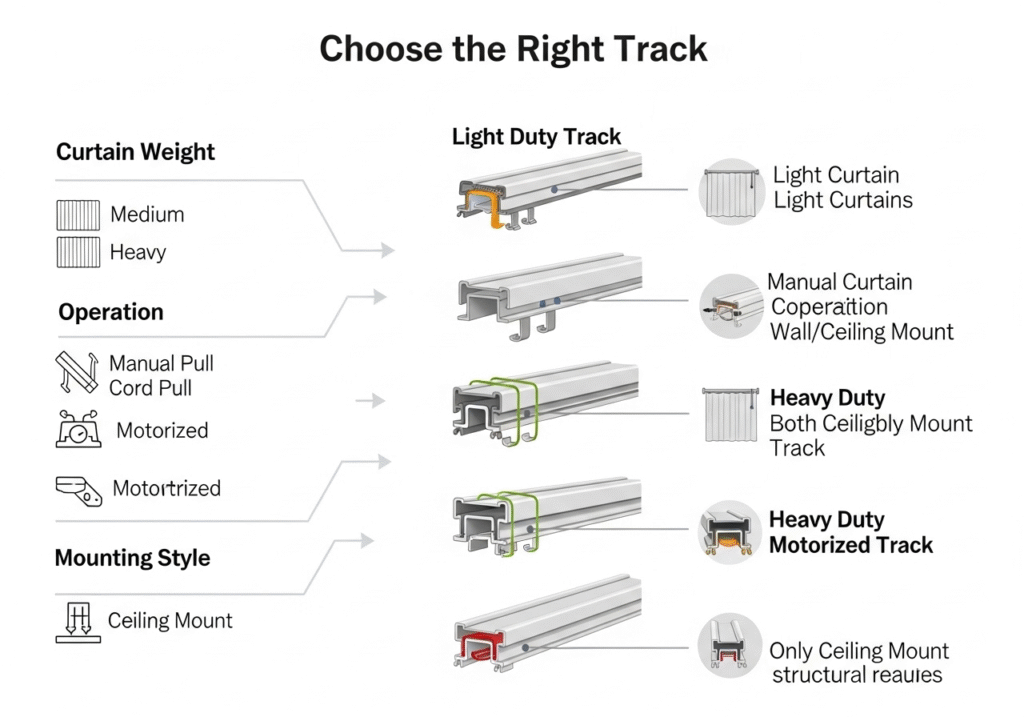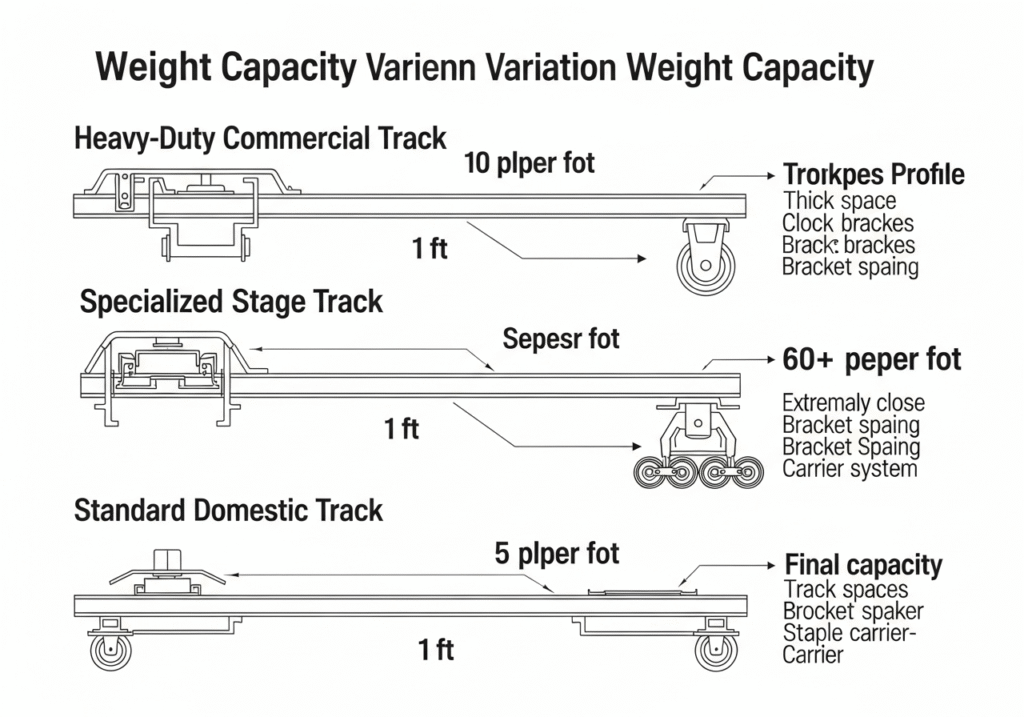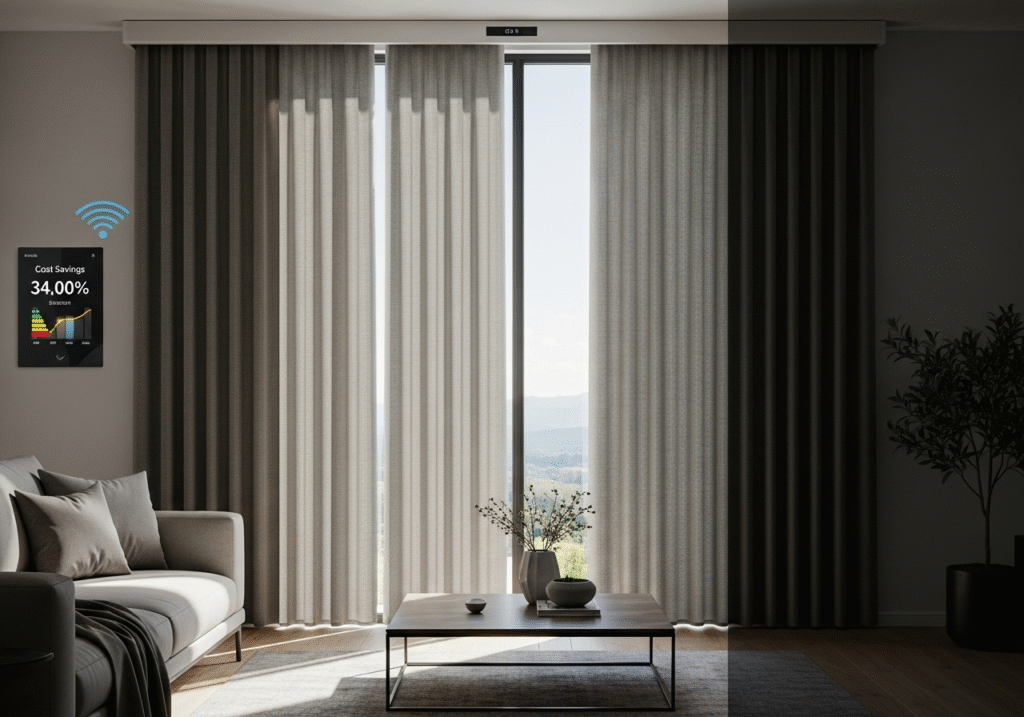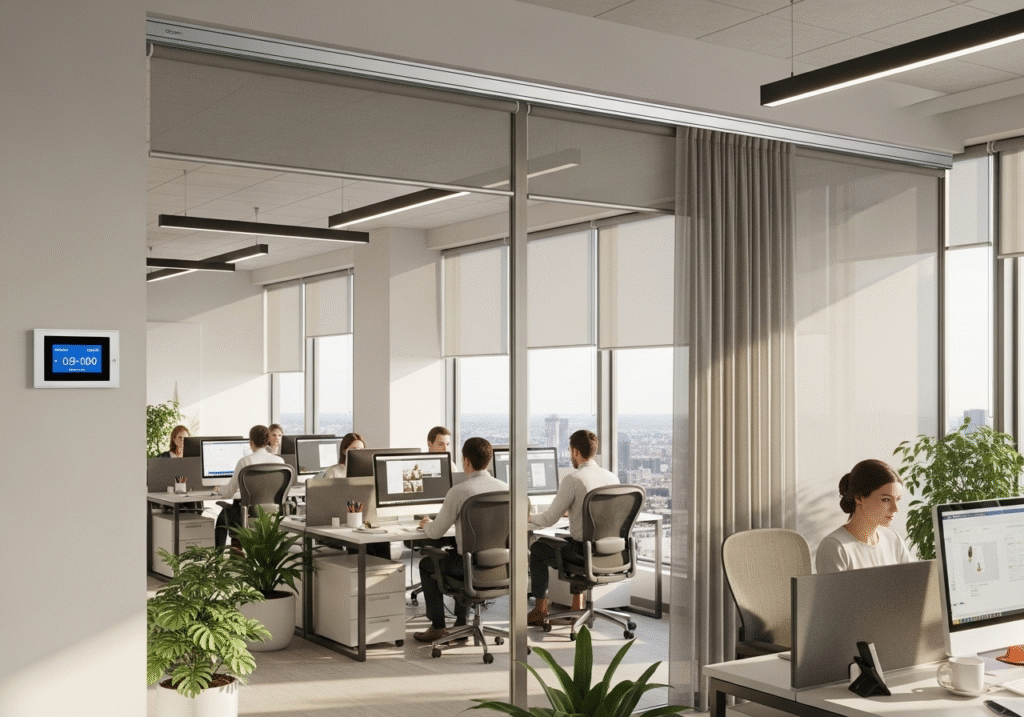What Are the Different Types of Curtain Tracks and How Do They Work?

Choosing the right curtain track seems simple, but a wrong choice can ruin a room's look. It can lead to sagging curtains, snagged gliders, and frustrated clients.
Curtain tracks are systems that hold and move curtains. They come in materials like aluminum or steel, can be mounted on walls or ceilings, and include flexible options for curves. They operate manually via wand or cord, or automatically via a motor for modern convenience.
When I first started on the factory floor, I was amazed at how many different types of tracks we produced. Each was designed for a specific purpose, from a simple residential window to a grand hotel ballroom. It taught me that the track is the foundation of any window treatment. Over the years, I've used this knowledge to guide partners like Matt, a Purchasing Manager in the US, to ensure he orders the perfect system for every project. Let's break down the options so you can choose with confidence.
What materials are curtain tracks made of?
The material you choose impacts everything from durability to appearance. A weak or rust-prone track can quickly fail, leading to costly replacements and damage to your company’s reputation.
Most curtain tracks are made from extruded aluminum or steel. Aluminum is lightweight, naturally rust-proof, and versatile for most uses. Steel is heavier and stronger, reserved for industrial applications or extremely heavy curtains that require maximum rigidity and support.
In my experience manufacturing these products, the choice between aluminum and steel is fundamental. For the vast majority of applications—I'd say over 90%—aluminum is the superior choice. We use high-grade aluminum and shape it through an extrusion process. This allows us to create intricate profiles that are both lightweight and incredibly strong. The best part is that aluminum forms its own protective oxide layer, so it will never rust, even in humid environments like bathrooms or coastal homes.
Steel's main selling point is brute strength. Its rigidity is unmatched for spanning very wide openings or holding up incredibly heavy drapes, like those found on a theater stage. However, steel's major weakness is its vulnerability to rust. The protective powder coating must be flawless. A single deep scratch can expose the metal to moisture, causing rust that will stain fabrics and eventually compromise the track itself.
| Feature | Aluminum | Steel |
|---|---|---|
| Weight | Lightweight | Heavy |
| Corrosion Resistance | Excellent (Naturally rust-proof) | Poor (Requires protective coating) |
| Strength | Very Good (Sufficient for most uses) | Excellent (For extreme loads) |
| Best Use | Residential, commercial, curved windows | Industrial, theaters, extra-wide spans |
What is the difference between wall-mounted and ceiling-mounted curtain tracks?
Not sure whether to mount on the wall or ceiling? This decision affects the final look and function. The wrong choice can make a room feel smaller or fail to block light.
Wall-mounted tracks are installed on the wall above the window, which is the traditional method. Ceiling-mounted tracks attach directly to the ceiling, creating an elegant floor-to-ceiling look or serving as a room divider. This choice depends on your design goal and structural limitations.
I’ve seen both methods used to create stunning effects. The choice often comes down to the architectural style and the desired visual impact. Wall mounting is the go-to for most standard window situations. It's straightforward to install as long as there is enough solid wall space above the window frame to securely fix the brackets. This is the classic look most people are familiar with.
On the other hand, ceiling mounting offers unique aesthetic and functional advantages. It's my preferred method for modern interiors. Mounting the track on the ceiling and running the drapes to the floor makes the ceiling appear higher and the room feel larger and more luxurious. It's also the only solution when there is no wall space above the window, such as in rooms with floor-to-ceiling glass. I also recommend ceiling tracks for creating non-permanent room dividers in open-plan offices or studio apartments. Their discreet profile blends seamlessly into the ceiling, making them almost invisible when not in use.
Are flexible curtain tracks good for special spaces?
Struggling with bay windows, curved walls, or other awkward spaces? Trying to force straight tracks to fit these areas results in a clunky, unprofessional look and poor function.
Yes, flexible curtain tracks are an excellent solution for non-standard spaces. Made from bendable aluminum or polymer, they can be easily shaped by hand or with a tool to perfectly follow the contours of bay windows, arches, and curved walls for a seamless finish.
Flexible tracks are one of the most practical innovations I’ve seen in my career. I remember when fitting a bay window meant cutting multiple straight tracks and joining them with clunky corner pieces. The gliders would always catch on the joints. Today, a single flexible track creates a smooth, continuous run. This ensures the curtains glide effortlessly from one end to the other without snagging. It’s a game-changer for installers and end-users.
We manufacture our flexible tracks from a special grade of aluminum that is strong enough to support medium-to-heavy curtains but pliable enough to be bent on-site into the desired shape. This versatility makes them invaluable for a range of applications beyond just bay windows. For example, they are perfect for creating curved shower enclosures, fitting around structural columns, or building custom canopy beds. By offering flexible tracks, you provide your clients with a simple solution to what used to be a complex installation problem, saving them time and labor.
How do manual vs. motorized curtain tracks compare in commercial use?
Choosing between manual and motorized systems for a commercial project? While manual tracks are cheaper upfront, they can lead to wear and tear from rough handling by guests or staff.
In commercial settings, manual tracks are cost-effective and reliable for standard use. However, motorized tracks offer superior convenience, reduced wear and tear, and a touch of luxury that is ideal for high-end hotels, conference rooms, and spaces with hard-to-reach windows.
For large commercial projects like hotels, this decision has big implications. My partner Matt often orders both types, depending on the area of the hotel. Standard manual tracks, especially those with a wand control, are durable and dependable for guest rooms. The wand prevents people from pulling on the curtain fabric, which extends the life of both the drapes and the track. They are simple, with few moving parts to break.
However, for suites, lobbies, and conference rooms, motorized tracks are becoming the new standard. The upfront investment is higher, but the long-term benefits are clear. Motorization ensures a smooth, gentle operation every time, which drastically reduces wear and tear on the system. It also provides a "wow" factor that guests remember. With smart controls, staff can open or close all drapes in a conference room with a single button press. For very high or large windows, motorization is not just a luxury; it's a necessity for practical operation. The quiet motors we build into our systems provide effortless control and integrate seamlessly with building automation systems.
Conclusion
From material to mounting style, each curtain track type serves a purpose. Understanding these differences ensures you choose a quality, safe, and stylish system that perfectly fits your project's needs.




